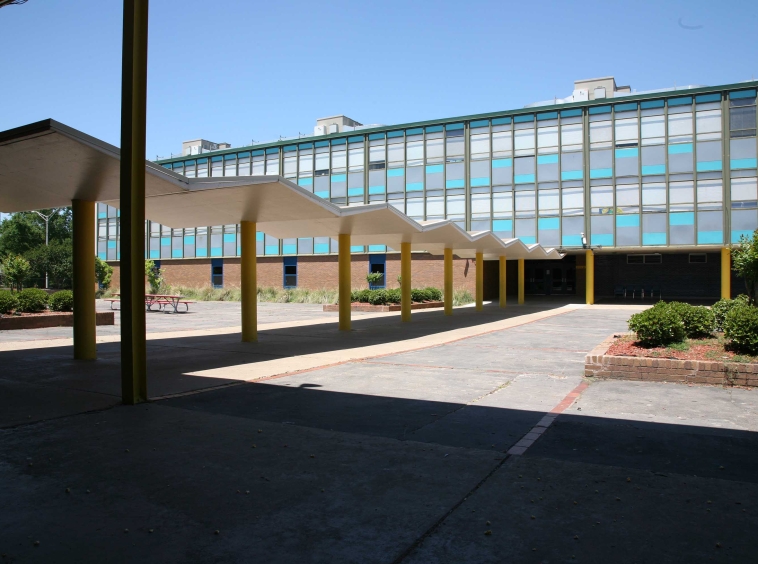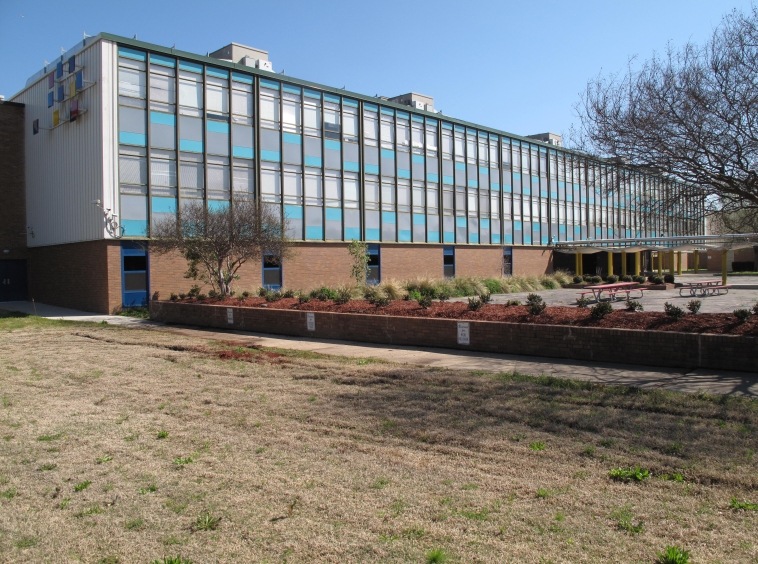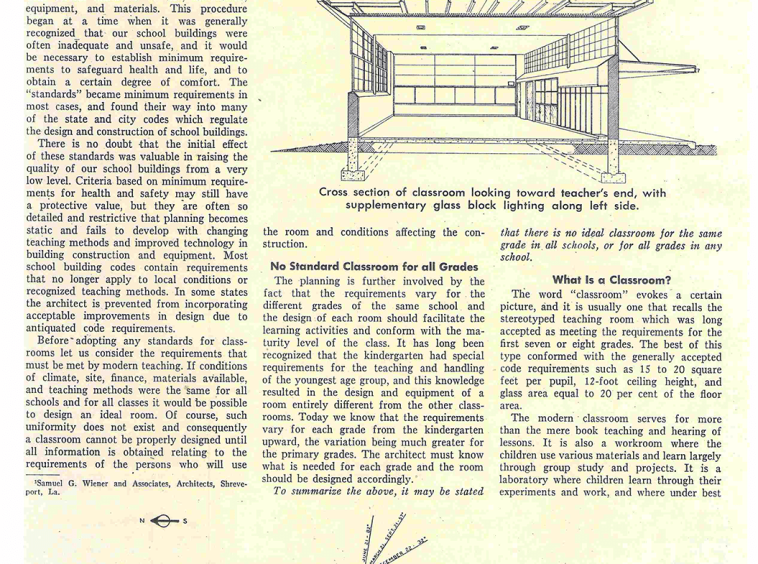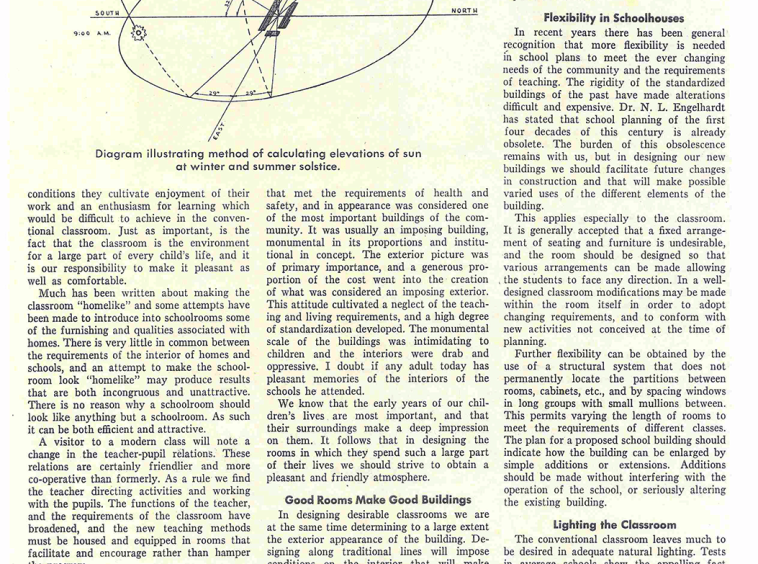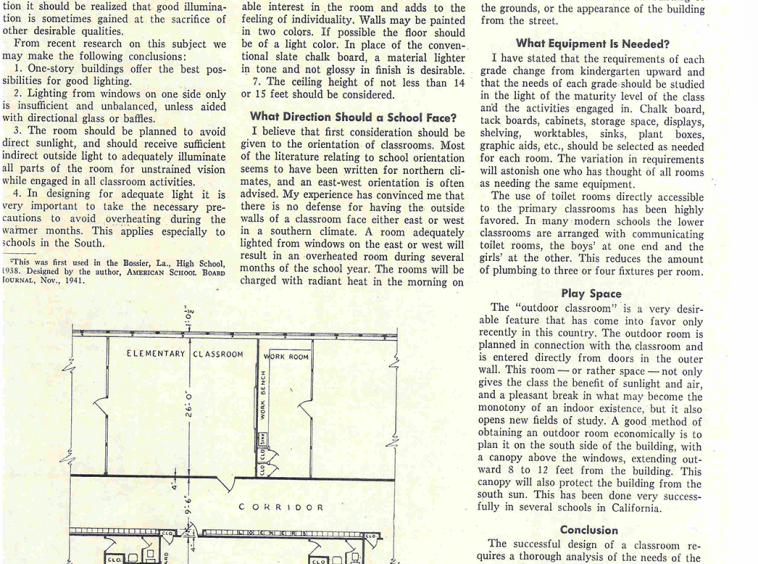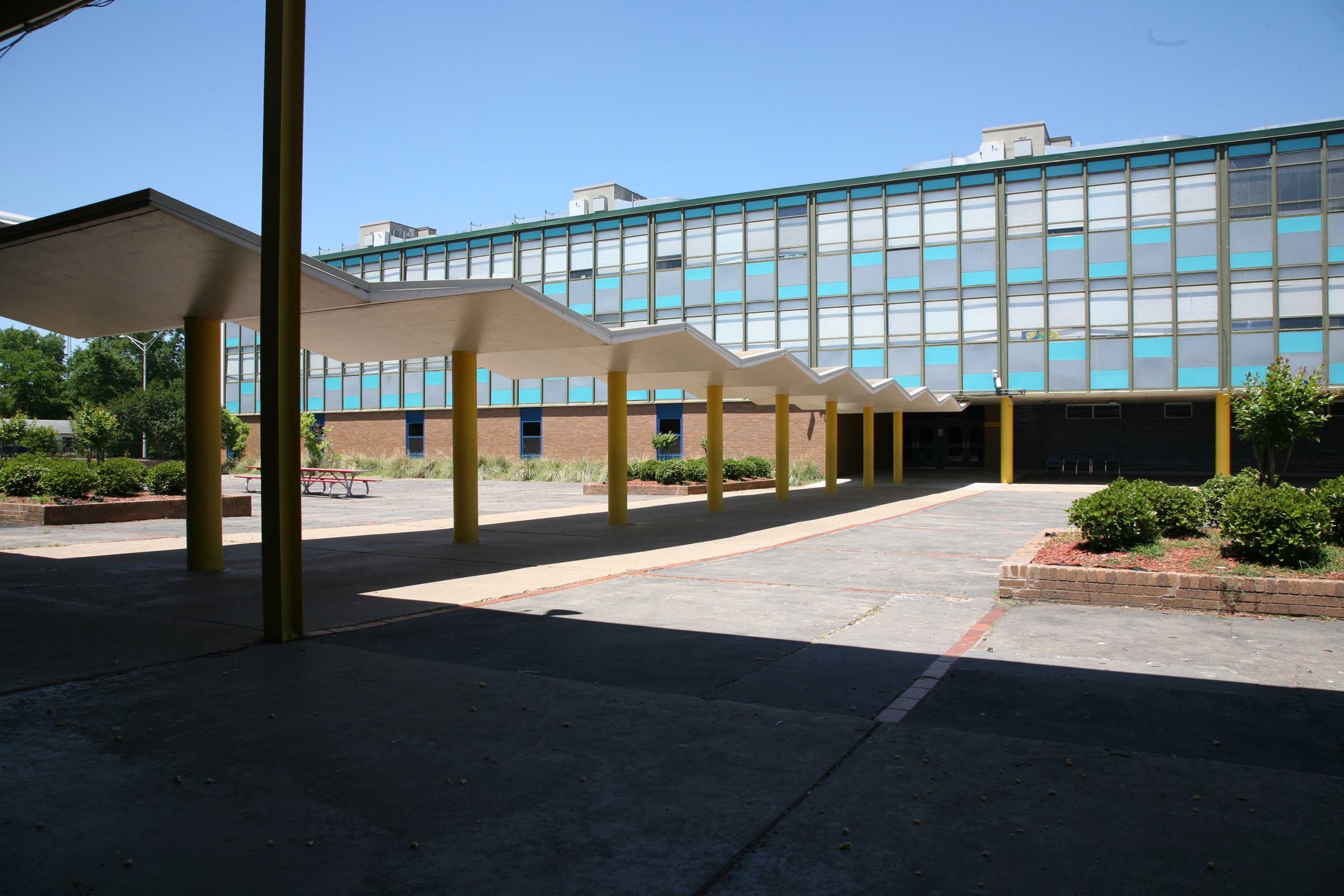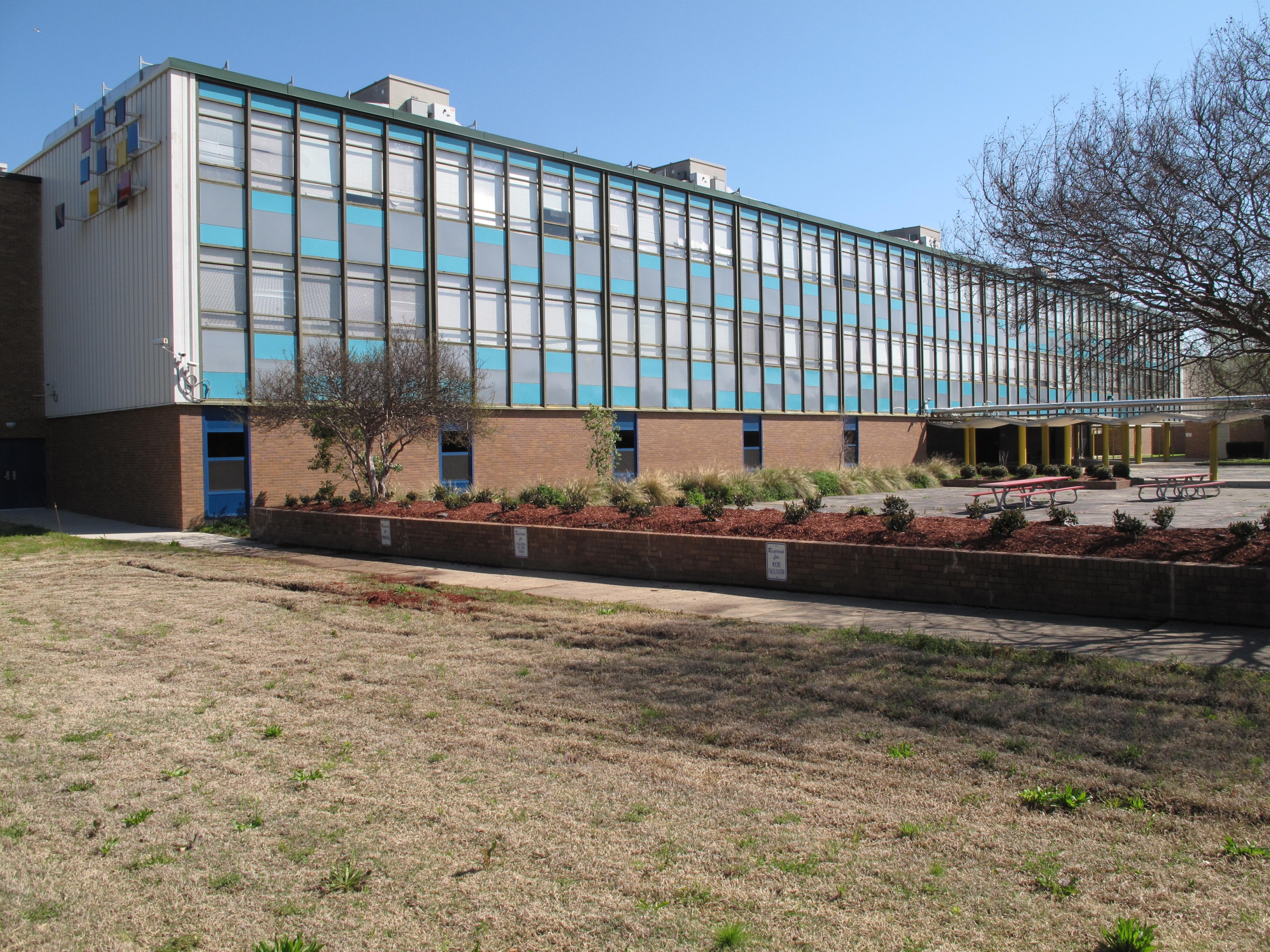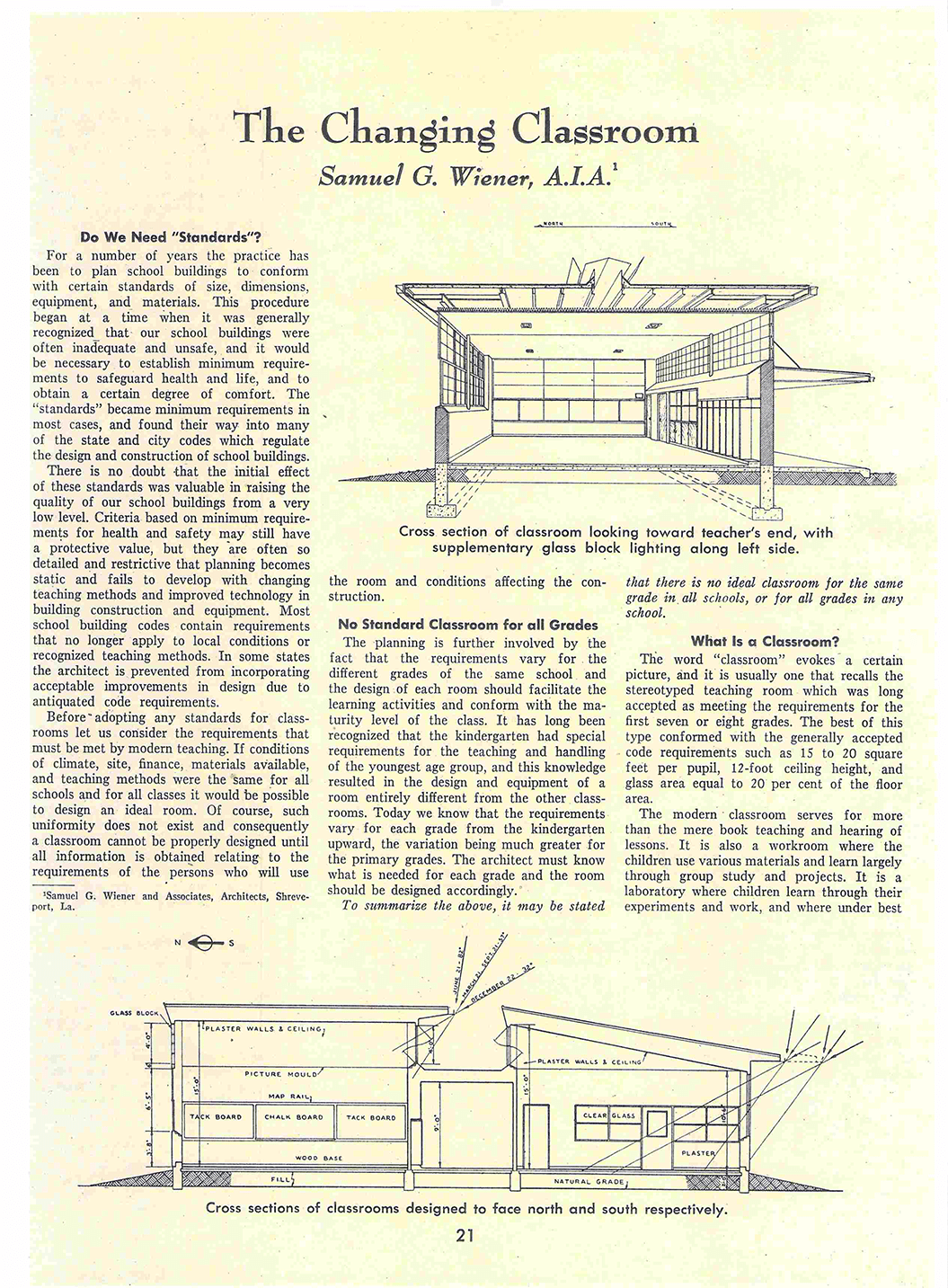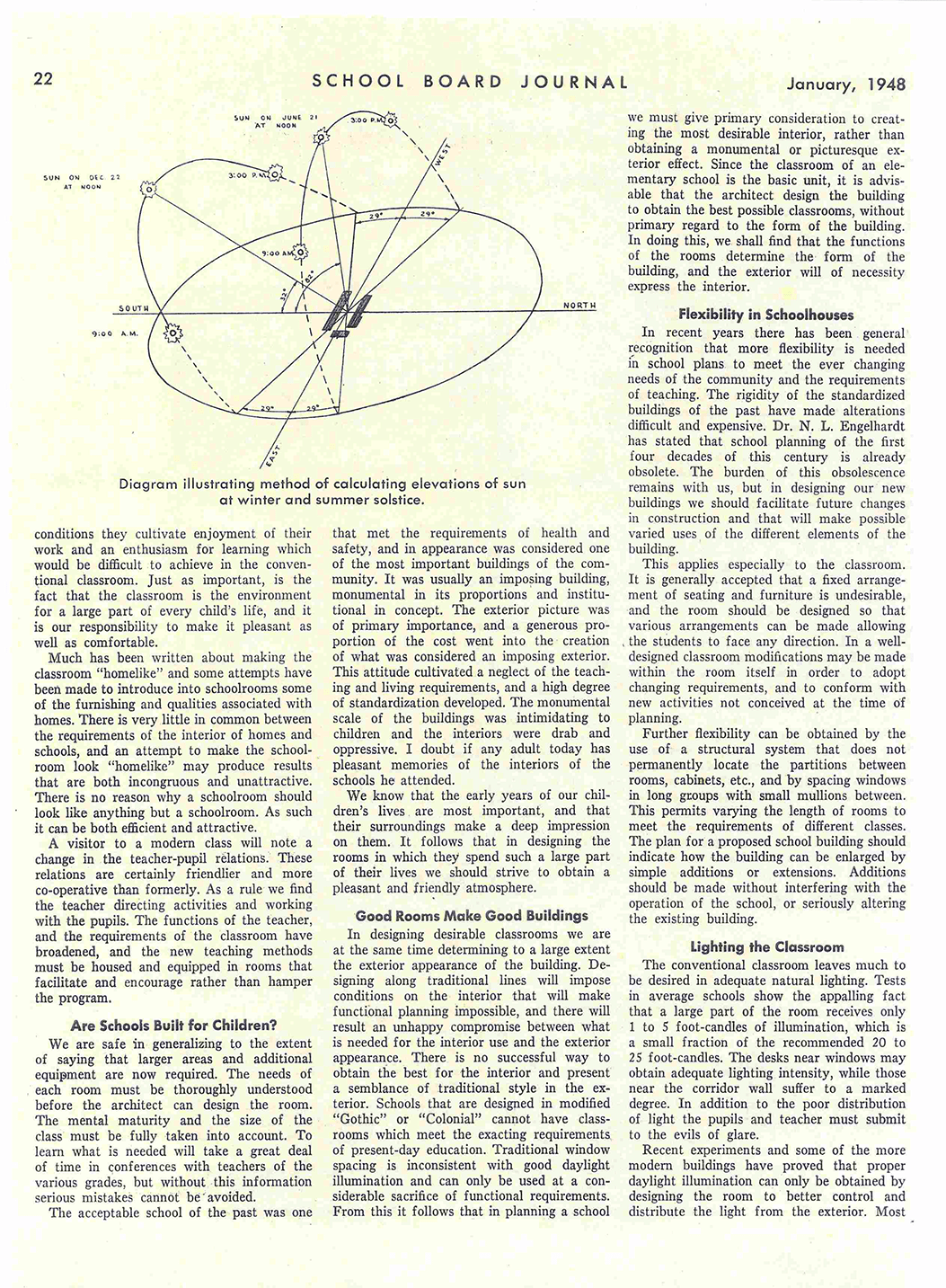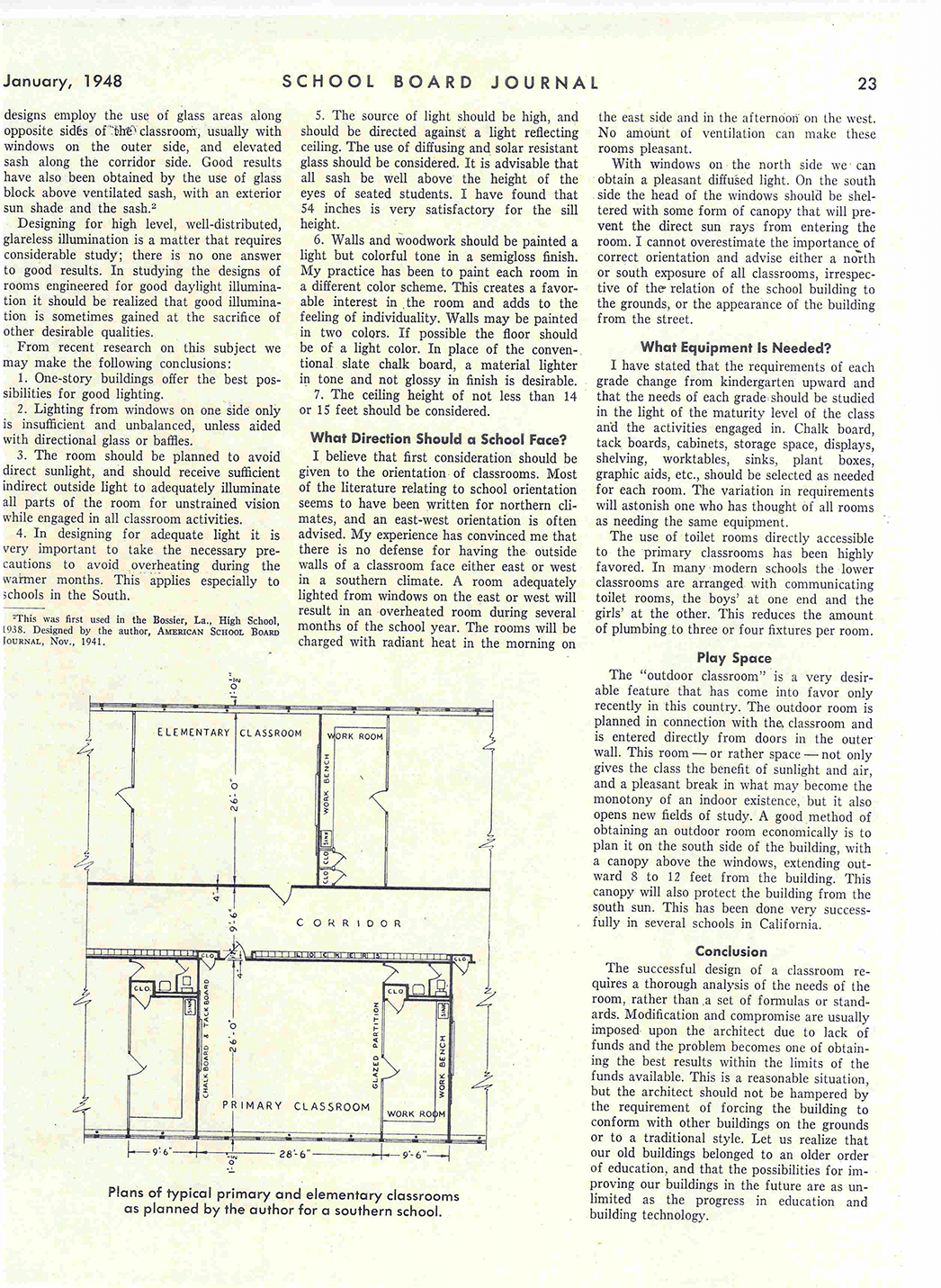Description
- Designed by: William B. Wiener and Associates, P. Murff O’Neal Jr., and William F. Ferrell Associates
- Design year: 1957
Nine years after his design of Linwood Junior High School, William B. Wiener Sr. designed J. S. Clark Junior High School using a similar planning strategy. The two rectangular bars run east/west and are connected with a north/south reinforced concrete folded plate double-cantilevered covered walk. The walkway serves as the major planning axis of campus plan. The walkway begins on the south side of the campus with the bus drop-off, continues to the bar containing the cafeteria and auditorium, bisects the courtyard, and terminates at an exterior covered concourse located below two floors of classrooms at the northernmost bar. The limited area concrete covered walk is the principal visual component of the campus and also one of the costliest portions per square foot. The parent’s drop-off occurs at the west end of the courtyard and the gymnasium occurs on the east-end of the courtyard.
The classroom bar has a glazed curtainwall with enameled spandrels on all three floors facing north. On the south side of the classroom bar, the glazed curtainwall occurs on the 2nd and 3rd floors and the first floor is clad with face brick that is recessed to accommodate a covered exterior concourse. The glazed curtainwall is structured with hollow metal framing with exposed glass stops (less expensive than aluminum) which gives the campus a corporate feel As a cost saving measure, Wiener combined reinforced concrete and steel structure at the J. S. Clark campus.
The abstracted art elements on the classroom building facing Hearne Avenue were designed by William’s nephew artist Samuel G. Wiener Jr. (known as Sam IV within the Wiener family).
What's Nearby?
- Arts & Entertainment
-
Shreve Memorial Library (0.11 mi)
-
Mt Canaan Baptist Church (0.8 mi)
-
Paragon Press (1.17 mi)
- Local Flavor
-
Local Flavor (65.62 mi)
- Nightlife
-
Cross Lake Bar (1.88 mi)
-
Tucker's Lounge (1.07 mi)
-
Mounsour's Restaurant & Bar (1.41 mi)
- Restaurants
-
Busy Bee Bbq (0.48 mi)
-
U & I Soul Food (0.75 mi)
-
J&D Cafe (0.79 mi)
- Shopping
-
Lakeshore All Around Sounds (1.13 mi)
-
Little Partners (1.25 mi)
-
Family Dollar (1.41 mi)

